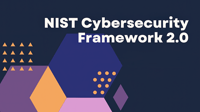
1. On Implementing a Cybersecurity Framework
Between steering your company through market challenges and striving for growth, the constant worry about cyber threats can feel overwhelming. You're not alone—many executives share this concern. Fortunately, CIS Controls Framework offers a practical roadmap to help protect your organization's valuable assets.
What makes the CIS Controls Framework particularly valuable is its emphasis on prioritized, tactical steps designed to mitigate risks in practical, manageable stages. Accessible to organizations of all sizes, the framework is especially well-suited for startups and small-to-medium-sized businesses, thanks to its simplicity and ease of implementation.
2. Why Choose the CIS Controls Framework?
Adaptability and Applicability
The CIS Controls are organized into three categories: "Basic Controls," "Foundational Controls," and "Organizational Controls." This structure makes the framework adaptable to the diverse needs and technical capabilities of various organizations. Its hierarchical approach enables resource-constrained organizations to focus first on implementing highly effective controls, helping them build a strong security foundation efficiently.
Resource Efficiency
The CIS Controls emphasize prioritizing critical controls, making them particularly beneficial for organizations with limited resources. By following a prioritized roadmap, even small businesses or those new to cybersecurity can enhance their defense capabilities without overextending their resources.
3. Comparison of CIS and NIST: A Strategic Perspective
The NIST Cybersecurity Framework (CSF) and the CIS Controls Framework are powerful cybersecurity tools. The NIST Cybersecurity Framework takes a strategic approach, encompassing five core functions: Identify, Protect, Detect, Respond, and Recover. It is a high-level and mature framework designed to build robust, strategic defenses, but its full implementation often requires significant resources.
In contrast, the CIS Controls Framework adopts a more tactical approach, focusing on actionable, prioritized steps to reduce risk. Organizations can start with CIS as a foundational framework and later integrate elements of NIST as their security posture matures.
Our proprietary NRI Secure Framework (NSF) creates assessment items through continuous updates, leveraging insights from top security frameworks, best practices, and emerging cybersecurity threats and trends, including NIST and CIS. This serves as the backbone of our security gap analysis services.

4. Understanding the CIS Controls Framework and Its Purpose
The CIS Controls are divided into three categories, each with a distinct purpose:
- Basic Controls: These include foundational practices such as asset management, secure configuration, and privileged access control. Implementing these controls first allows organizations to protect their most vulnerable assets.
- Foundational Controls: These controls cover more complex security needs, such as vulnerability management, malware defense, and email/web browser protection. They build on the Basic Controls to strengthen the organization’s overall security posture.
- Organizational Controls: This advanced category includes governance practices such as incident response, audit log management, and data recovery. These controls are essential for long-term risk management.
These interrelated categories create a structured system that incrementally enhances an organization’s security posture.
Note: The latest version, CIS Controls v8, has been updated to better address modern threats and emphasize flexibility and adaptability.
 CIS Controls Version 7. Source: Center for Internet Security.
CIS Controls Version 7. Source: Center for Internet Security.
5. Customizing the CIS Controls Framework for Your Organization
The CIS Controls Framework is highly flexible and can be tailored to align with an organization’s unique risk profile, resources, and operational needs.
Customization by Industry
For example, industries can customize the CIS Controls Framework to address their specific challenges. In the retail sector, organizations might prioritize strengthening malware defenses, securing system configurations, and focusing on the security of payment systems.
In contrast, healthcare organizations may emphasize data privacy and compliance with regulations such as HIPAA. By aligning the CIS Controls Framework with industry-specific risks, organizations can maximize its effectiveness.
Customization by Organization Size
Customization can also vary based on the size of the organization.
- Small businesses might focus on foundational controls to establish a strong baseline for security.
- Midsize organizations could expand upon these by implementing additional basic controls to reinforce their security layers.
- Large enterprises, on the other hand, may adopt all levels of controls to build a comprehensive security posture. This approach ensures resources are allocated efficiently to the areas where they are needed most.
6. Steps to Implement the CIS Controls Framework: A Simplified Guide
Implementing the CIS Controls Framework is most effective when approached in stages, ensuring each step builds upon the previous one. Here's a streamlined guide to get you started:
Step 1: Initial Assessment
Begin by conducting a risk assessment to identify vulnerabilities and align your efforts with the most relevant CIS Controls Framework measures.
Step 2: Implement Basic Controls
Establish foundational defenses by focusing on the following:
- Asset Inventory: Identify and catalog your organization's devices and software.
- Secure Configurations: Apply standardized, secure settings to your systems.
- Privileged Access Management: Restrict and monitor access to sensitive systems and information.
Step 3: Apply Foundational Controls
Strengthen your security posture by implementing the following:
- Vulnerability Management: Continuously identify, prioritize, and remediate vulnerabilities.
- Malware Defenses: Deploy effective solutions to prevent, detect, and respond to malware threats.
- Browser Security: Enhance the security of web browsing activities to reduce risk.
Step 4: Integrate Organizational Controls
Build a robust security foundation by establishing comprehensive practices for:
- Incident Response: Develop and maintain an incident response plan to address security breaches efficiently.
- Audit Log Management: Ensure proper logging and monitoring of security events.
- Data Recovery: Implement reliable data backup and recovery mechanisms.
The CIS Controls Framework (version 7) prioritizes 20 measures, organized by their importance. The top six controls are categorized as "Basic Controls" and referred to as "Cyber Hygiene"—a critical set of practices essential for safeguarding your organization. These measures are considered a top priority and should be implemented without delay.

7. Track Progress and Measure Results with the CIS Controls Framework
To ensure the implementation of the CIS Controls Framework delivers tangible results, it is essential to monitor and measure the effectiveness of the controls. You can assess security improvements over time by leveraging KPIs (Key Performance Indicators).
- Asset Inventory Coverage: Tracks the percentage of assets included in the inventory to ensure comprehensive visibility.
- Vulnerability Remediation Rate: Measures the frequency and speed at which identified vulnerabilities are addressed and resolved.
- Incident Response Time: Evaluates the average time from incident detection to response and recovery.
By regularly reviewing these metrics, organizations can identify gaps, make necessary adjustments, and ensure the framework remains effective against evolving threats.

8. Leveraging the CIS Controls Framework for Continuous Security and Compliance
The CIS Controls Framework is a powerful tool for streamlining compliance efforts in alignment with various regulatory requirements. For example, practices related to data protection and secure access management within the CIS framework support standards set by GDPR, HIPAA, and CCPA. This not only strengthens security measures but also ensures compliance with these regulations.
Continuous Risk Management
Regularly reviewing and adjusting the CIS Controls Framework allows organizations to stay responsive to emerging threats. By integrating new best practices and adapting controls to evolving technologies and threat landscapes, businesses can maintain effective defenses over the long term.
Examples of Compliance Alignment
- GDPR: The CIS Controls Framework’s focus on access management and data protection aligns closely with GDPR's stringent data privacy requirements.
- CCPA: By emphasizing data security practices that safeguard personal data and uphold consumer rights, the CIS Controls Framework supports compliance with CCPA.
By aligning the CIS Controls Framework with regulatory requirements, organizations can simplify audits and reduce the risk of penalties associated with non-compliance.
9. Final Thoughts and Next Steps
The CIS Controls Framework offers a comprehensive yet manageable approach to cybersecurity, making it an ideal choice for organizations of all sizes. By implementing prioritized controls, tracking progress, and tailoring the framework to meet specific organizational needs, you can establish an effective and scalable cyber defense system.
Next Steps:
- Conduct a detailed assessment of your organization’s cybersecurity needs.
- Prioritize foundational controls and gradually expand to cover organizational and advanced controls.
- Regularly monitor progress, measure effectiveness, and adjust as needed.
By following these steps, your organization can systematically build a secure environment, protect valuable assets, and confidently navigate the complexities of modern cybersecurity challenges.










